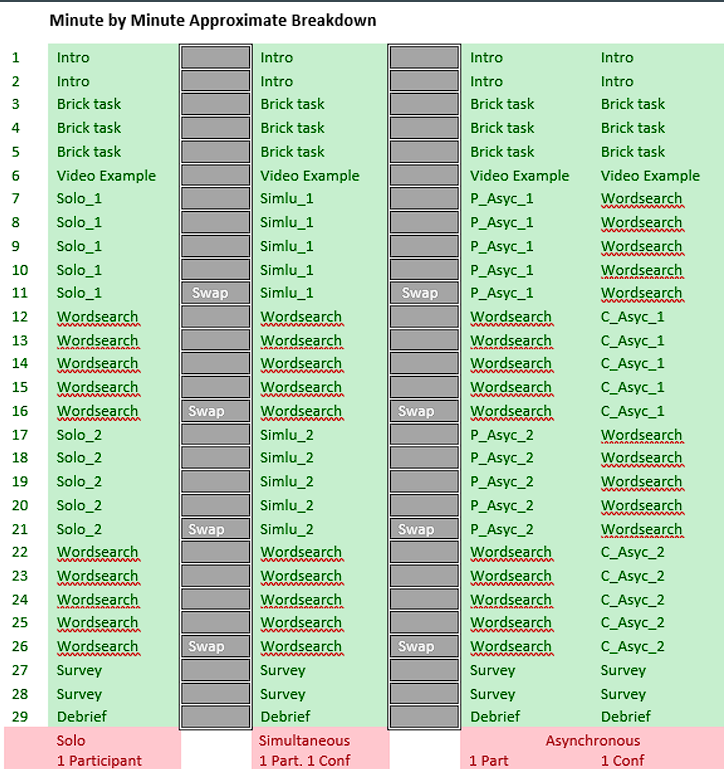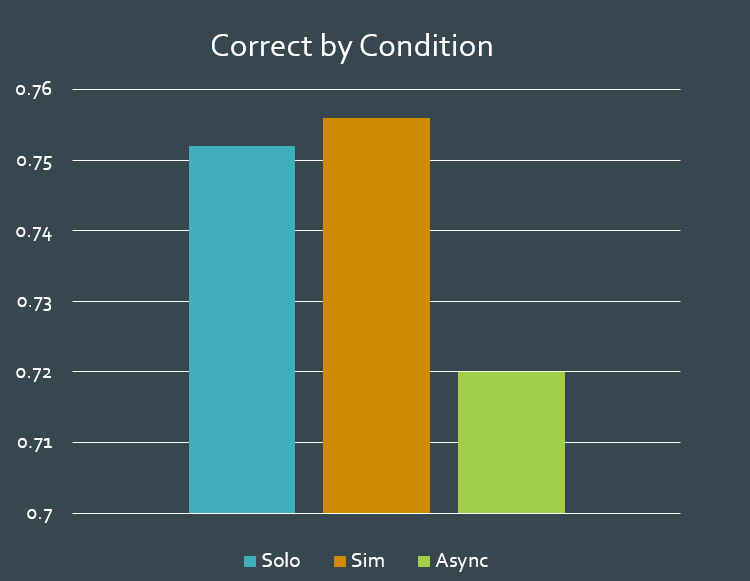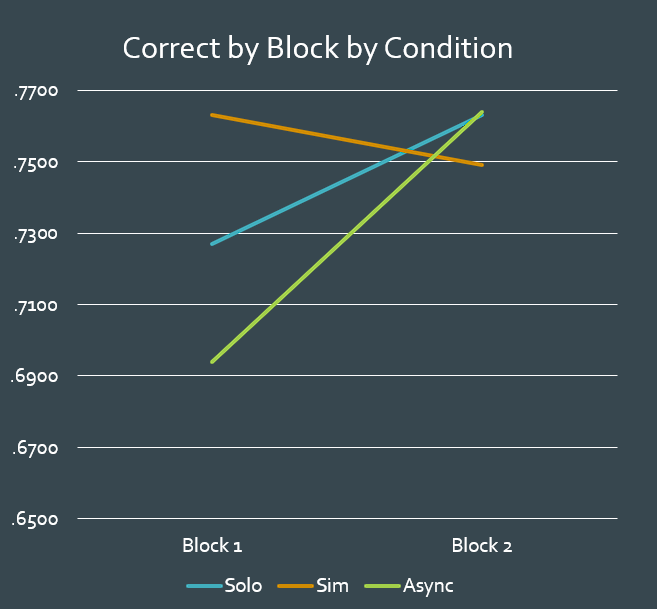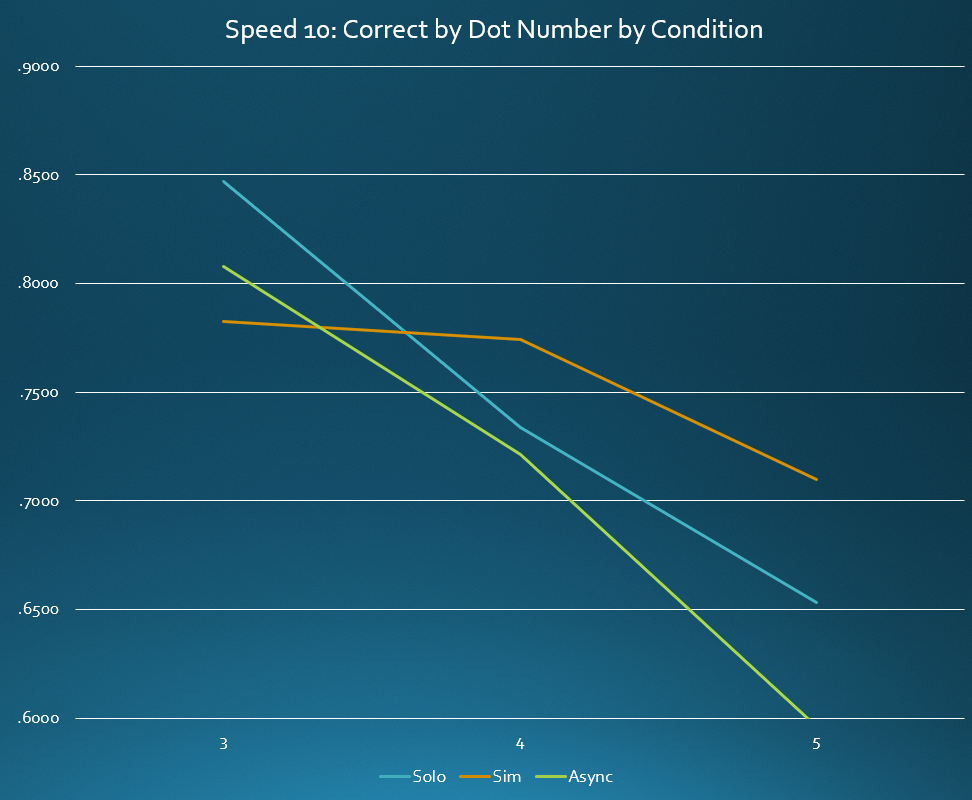Multiple Object Tracking
Tools used: MATLAB, SPSS, R, Excel, PowerPoint, Adobe Premiere
Idea
My lab's collective focus involved the study of attention in group scenarios. I personally enjoy games and competition. Naturally, I saw an opportunity to design an experiment that tested the effect of someone's performance while others are watching. As an example:
Imagine you and a friend are walking down a busy metropolitan street. Through the noise and bustle you hear a man calling for a participant in a street game. He ushers you and your friend over and explains the rules. It’s a classic shell game: there are three shells, under one of which is a marble. The object of the game is to track the shell in which the marble is contained, all while they are swiftly shuffled around. Your companion, unamused, stands idly by and browses their phone. Assuming a fair game, to what extent is your ability to track the correct shell impacted by whether your friend is watching?
I wanted a way to recreate this in the lab. The paradigm itself was relatively simple: are people better able to direct their attention when others are present? Does it matter if they're watching you or is just being in the room enough?
I predicted that people actively doing the task with someone else would perform the best, while those doing it alone or simply taking turns would perform similar to one another. In essence, "sharing" the task would increase people's attention to it.
Experiment
In order to test this in a
controlled environment, I needed to find a suitable experiment or devise
my own. Luckily, I stumbled across the perfect one: Multiple Object Tracking (MOT).
In an MOT participants are shown a number of objects. Some of them are then designated targets. All the objects move about the screen, bouncing off the edge and each other. At the end, participants are then asked to differentiate between the original targets and distraction objects.
Researching, I discovered an open-source project that featured an MOT created in MATLAB. I then cut it down substantially, added various controls as well as instructions, a method to export the results to a more compatible csv format, and eventually made it multiplayer for specific conditions future conditions. Trials differed in difficulty between 3 levels of speed and 3 levels of targets to track. I provided a video below for demonstration. The project is available on my Github at the top of the page.
Presentation Design
For this I wanted every participant to be shown the same information, in the same order, in the most controlled environment possible. The only thing that I wanted to change was the presence and direction of anyone else's attention while in the room. In order to achieve this, I implemented "confederates" (actors pretending to be participants). They would arrive at the same time, hear the same instructions, and do their best to make friends with the real participant.
Participants were randomly preassigned to be in one of three groups: Solo, Simultaneous, or Asynchronous. The essential difference was that those in the simultaneous condition performed the task at the same time, while those in the asynchronous took turns. There were 2 blocks of testing with a break for a wordsearch distraction. This design ensured that every participant had the same experience in the same order, the only difference being the assumed distraction of the "confederate." The experiment ran for ~30 minutes. The instructor would leave the room, only to return after a set time to swap the wordsearch for the MOT.
At the conclusion, the participants would be given a survey, probed if they felt anything was suspicious (potential realization of the fake participant), and then debriefed with regard to the deception.

Results
My original prediction that people performing at the same time would do the best at the task was initially marginally supported. An ANOVA test would indicate that there were no overall differences found between groups (F(2, 92) = .922, p = .401). Further, the solo group performed nearly identically to the simultaneous.


Interestingly, I did find differences between trial blocks. The group performing the task at the same time did significantly better than both groups in block 1 (t(92) = 2.14, p < .05). Likewise, the asynchronous condition performed worse when compared to both simultaneous and solo conditions combined (t(92) = 2.00, p < .05). This effect was completely erased during the 2nd trial block.
It would appear from these results that doing the task together was only beneficial to performance when it was new or novel. Once participants were comfortable with the experiment, the phenomena was no longer observed, with everyone performing with relatively similar accuracy.

Take Home
It's been established
since 1898 with Triplett's theory of social facilitation that people
work harder in groups. Similarly, Zajonc's experiments in the 1960's
demonstrated that performing in front of a group increases your
excitement level, which in turn leads to you either excel
or choke, depending on your level of practice. I like to think the
results of this experiment confirm both of these while adding a bit of
nuance. Doing something new with people around doesn't necessarily mean
that you'll do bad at it. It instead suggests that if you're working
along side them, rather than just around them, that you'll actually
perform better. The excitement of being around a group doesn't
necessarily lead to anxiety and choking if you're in it together. In fact, it may work as a buffer against it.
